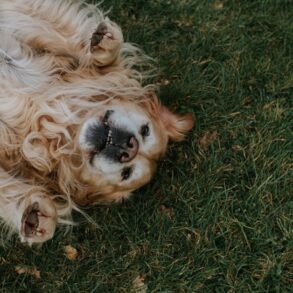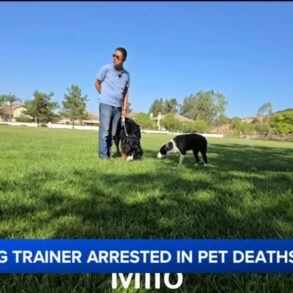From the outside, “six house” at Algoa Correctional Center outside Jefferson City doesn’t look like anything unusual – it’s made of the same yellow Missouri stone as the buildings that surround it.
But once you head inside, it becomes clear that things are different here: there’s no guard posted, inmates freely wander the halls and residents play chess and sit around talking in the rec room.
This is the Algoa honor dorm – home to 92 residents who are focused on reentry.

Rebecca Smith
/
KBIA
“Our motto is, you know, ‘improving lives for safer communities,’ and we do that every day here at Algoa. These guys are gonna get out, it’s gonna be safer in the communities because we’ve laid the foundation before they ever left, and I’m just very happy that I have the staff that I do here or none of this would be possible,” Morriss said.
“It’s a lot more freedom, right?” said William Tolson, Jr., who’s lived in the honor dorm since 2022. “We get to move around. We’re not as looked after, you know. So, the freedom that comes with it, the responsibilities that come with it is, to me, it’s the next step of me getting home.”
Tolson currently has a job at the canteen, takes classes towards an associate’s degree in business, participates in restorative justice programs and is one of two handlers for Honor, the four-legged resident of the dorm.
“I get to hang out with my best friend, Honor. He’s the honor dorm dog,” Tolson said. “I’m blessed to be able to be his handler. So, we’ve been with each other for about two years now.”
Honor is a special case. There are numerous dogs who live onsite at Algoa, as a part of Missouri’s Puppies for Parole program. It brings in dogs from Missouri shelters and rescues for eight-weeks of training – all in hopes of making them more adoptable.




Rebecca Smith
/
KBIA
“I remember before me making all these changes, taking care of a dog was like a chore, you know, ‘I gotta go pick the food,’ everything was miserable, right? And now the state that I’m in now, it’s like, ‘Let’s go. This is what we do,’ you know, ‘I love cleaning up after you, even your messes. I don’t get mad, you know, it’s not frustrating. You’re a dog. I got you,’ you know, and it’s kind of like the same way back to us,” Tolson said. “So, in that way, just that simple mind change gives us a little bit more freedom in here, mental peace that we are able to experience – prepare me for the streets, responsibilities, right?”
Honor, on the other hand, is a permanent resident.
“He’s part of the family here,” Tolson said. “He really makes us be appreciative and grateful for what we have.”
Tolson said Honor is useful in many ways. He helps other, more skittish and shy dogs that come through the facility, comforts honor dorm residents and other inmates at Algoa when they’ve had a bad day and helps many work on rebuilding trust.
“So, just being able to have a hard time in here, a bad encounter with somebody – a staff member, whatever it might be,” Tolson said. “I know I got someone that I could come back to, I could sit down, I could take a deep breath and just love on him, pat on him, and think those things through, let them go and then go on about today.”
April Vanover is the functional unit manager for Algoa Correctional Center and the unit supervisor for the honor dorm. She said to live in the honor dorm and spend time with Honor, men have to be serious about changing before they reenter society.
Residents have to be free of conduct violations for two years, have no violations related to violence or drugs for three years, have a job or go to school, and have completed 90 hours of restorative justice programming.
Vanover also wrote the original proposal to make Honor a permanent resident.
“I think anything that we can do to calm their mind while they’re here and take them out of the place they’re at, just, is helpful,” Vanover said. “They come and tell us, like, it was, it’s not like my every day, it’s almost like being home, and just that little bit of stress relief allows them to really focus and be calm.
Vanover has seen a difference in inmates in the two or so years Honor has been around. She’s seen residents open up and be more vulnerable, and she even believes that Honor’s presence has deescalated tense situations between staff and inmates.
The science behind the snuggles
Jennifer Wesely, a professor in the University of North Florida’s Department of Criminology and Criminal Justice, has been studying the impacts of prison dog programs for about eight years.
She said evidence supports Vanover’s observations – prison dog programs can and do lead to behavior shifts in incarcerated participants.
“Relationships with these dogs actually change how these guys feel about themselves,” Wesely said. “The research finds that these programs do things like they enhance empathy, they enhance emotional intelligence, prosocial behaviors, they increase patience, sense of responsibility, things like that, and so, if people can build on those qualities, what will happen is that they can then take those outside.”
Wesely said she’s not aware of any other programs that have a permanent resident like Honor, and, in fact, issues like this are one of the challenges to her research. While there are anywhere from 250 to 350 dog-training programs in prisons across the country, there is very little standardization. Some programs do basic dog training, some just do socialization and some train dogs to be actual service animals.
But, she added, at the end of the day, all types of programs seem to have similar benefits that can be broken down into different stages of desistance, or changed behaviors.
Primary desistance is an immediate changed behavior, like not committing a crime. Secondary desistance, Wesely said, is more internal and long-term.
“Actually changing internally, to think of yourself as a different person,” she explained.
Wesely said she’s discovered other benefits, as well, through her research – such as prison dog programs helping inmates overcome racial divisions anda decrease in violence among male offenders.
“It kind of challenges criminogenic masculinity because they learn that being a man doesn’t mean you have to be violent, aggressive, or committing crime,” Wesely said. “That you can show emotion, you can have empathy, you can be in touch with those things, and it doesn’t make you less of a man.”
The cost of cuddling
Caring for an animal comes with many costs – food, regular vet care, and transportation – but Wesely says for most of the programs she’s familiar with, “the correctional facility does not tend to pay for anything.” That’s because the costs are covered by donations to the partner rescues and shelters.




Rebecca Smith
/
KBIA
“With a lot of guys in here, trust is a big issue with us, right? From where we’re at, backgrounds that we come from, even our own behaviors, right? So, trust is a big issue,” Tolson said. “And so, once you get Honor, right, there was no breaking that trust.”
But beyond just the immediate costs, prison dog programs have also been shown to impact recidivism rates, or how likely it is for someone to commit another crime once they’re released – which can also lead to fewer taxpayer dollars going toward corrections.
One scholarly analysis of prison dog programs in Florida from 2021, “A Beastly Bargain: A Cost-Benefit Analysis of Prison-Based Dog-Training Programs in Florida,” found the rate of recidivism reduced 19-24%.
“The analyses projected that, for every criminal justice system dollar spent on the dog-training programs, between $2,877 and $5,353 were saved,” according to the analysis. “These findings suggest that dog-training programs could be cost-beneficial.”
Wesely calls this a win-win-win. The programs benefits inmates, dogs in need and taxpayers.
“So, that’s like preventing one burglary, two frauds or 10 drug crimes per year,” Wesely said.
Back at Algoa, unit supervisor April Vanover said the costs of Honor living full-time in the honor dorm – including paying his handlers – are covered by a grant from the Missouri Puppies for Parole program.
Vanover said Honor originally came into Algoa through the program. He was brought up as a puppy from a shelter in the Springfield area. He’d likely been shot by a crossbow and still has a dark spot on his face to this day.
Honor and his ‘heeling’ impact
It’s been about two years now since Honor moved in with William Tolson, Jr. and his other handler, Calvin Nash. Nash has worked with numerous dogs through the Puppies for Parole program.
“When he first got here, he was pretty wild,” Nash said. “He used to run over people, run through the camp – just untamable, and they asked somebody to volunteer who had a little bit of experience.”
But things have changed. They said Honor is fairly quiet now and loves to sleep. He can often be found wandering the halls, hanging out with staff in their offices or comforting his handlers and other inmates.
Come commissary day, though, when inmates can purchase non-standard food and supplies for themselves, Honor is bright-eyed and bushy-tailed – making his way from room to room throughout the honor dorm hoping they have something for him.
“It’s the ‘Honor fee,’ his ‘Honor fee,’” Nash said. “Honor comes to collect… and he made you feel bad if you don’t collect, you don’t have anything for him. Puppy dog eyes, literally.”
Nash said most of their dorm mates are happy to oblige because Honor gives them a sense of home, a sense of hope.
It’s now gotten to the point that Honor is a bit overweight. In fact, unit supervisor April Vanover has had to change the honor dorm contract that each resident signs to state: “I will not feed Honor human food.”
For a full transcript of the broadcast version of this story, click here.




Rebecca Smith
/
KBIA
“He gives people that family, that connection. He gives us a segue to talk, a connection to bind,” Nash said. “So, when you feel like you can’t speak to a human, he’s right there waiting for you, and he’s willing to listen and lay with anybody,” Nash said. “Even if people were skeptical at first and didn’t want him around – everybody loves Honor. I’m talking about not just our housing unit, but the whole camp.”
This post was originally published on this site be sure to check out more of their content.












































